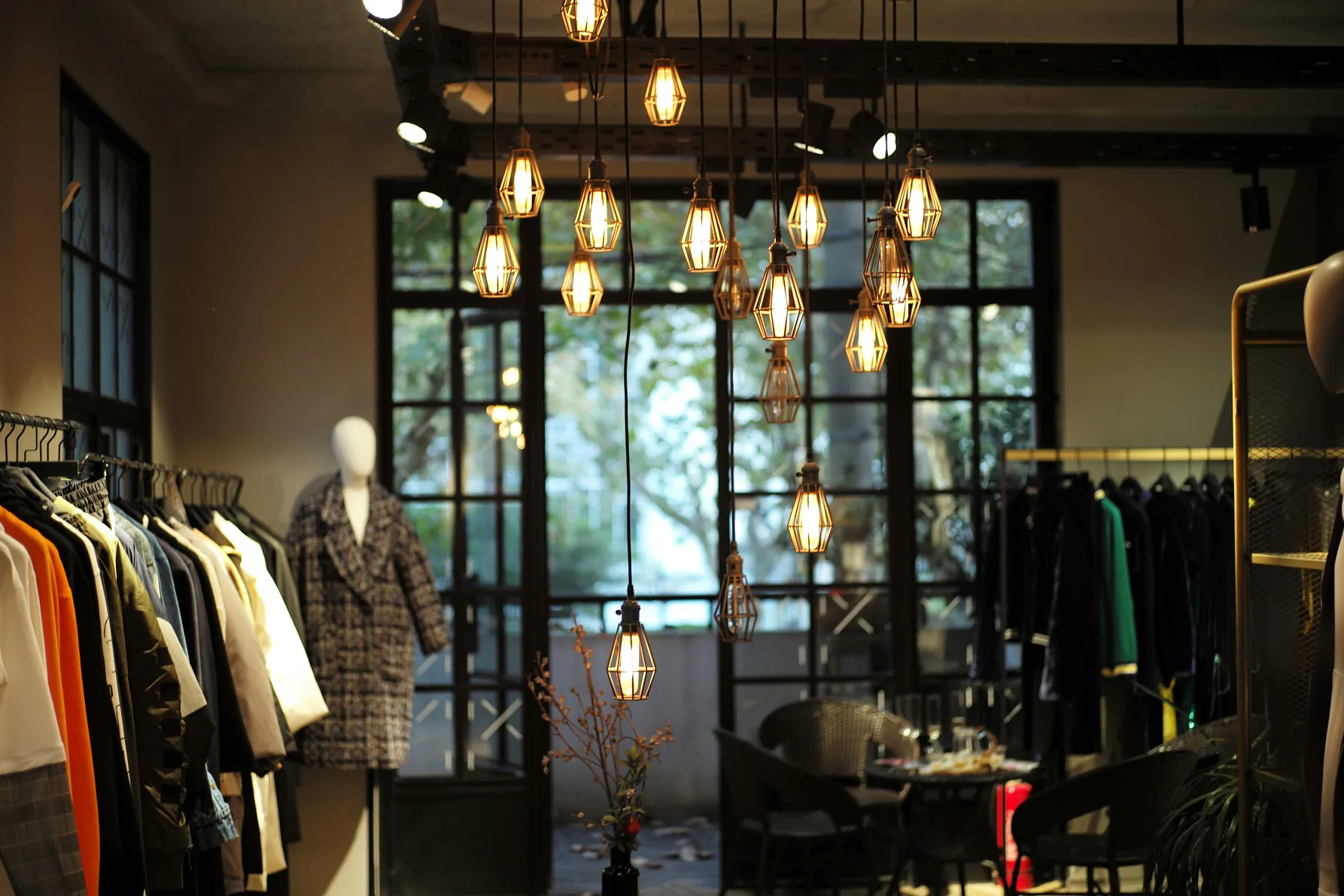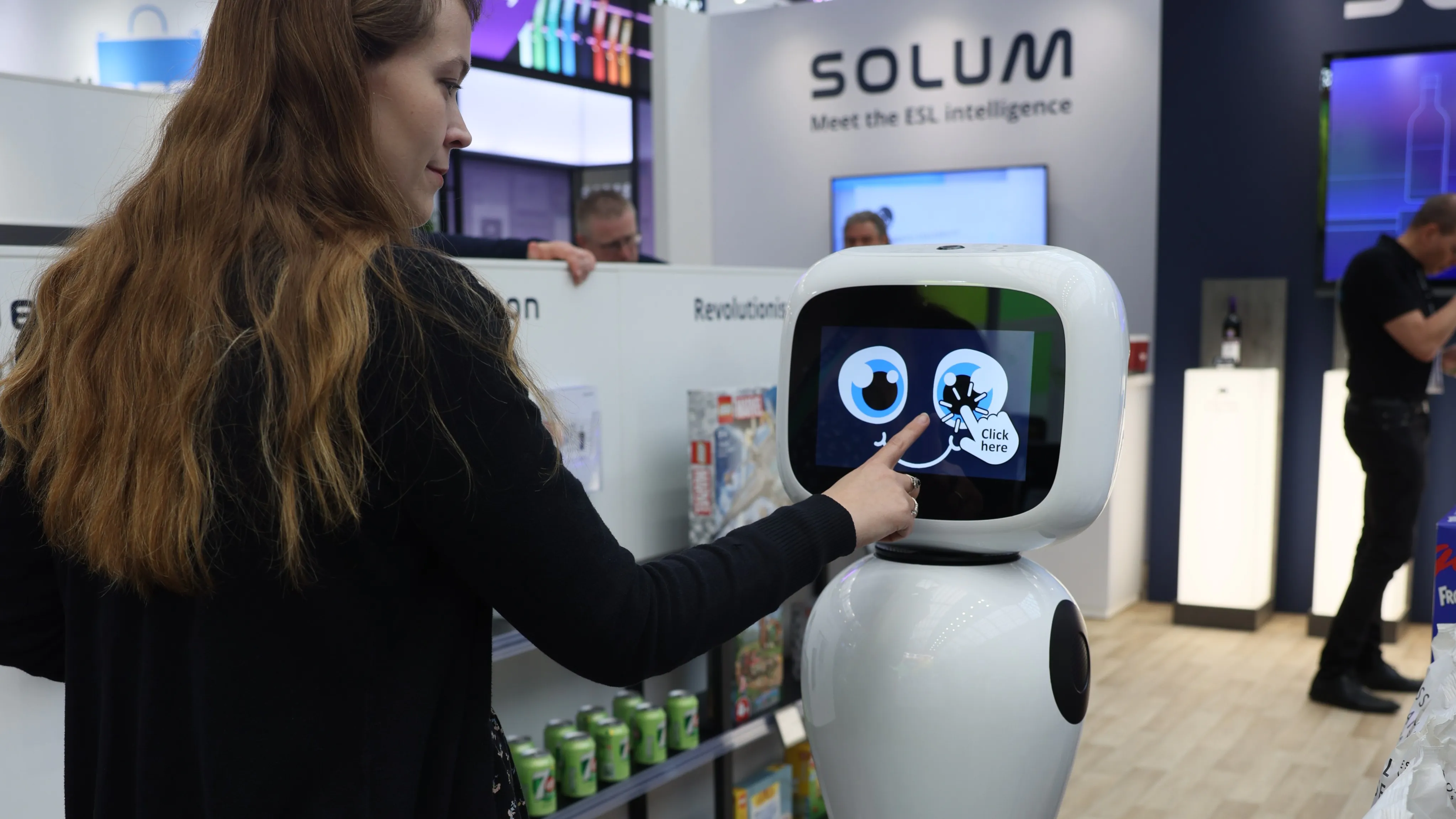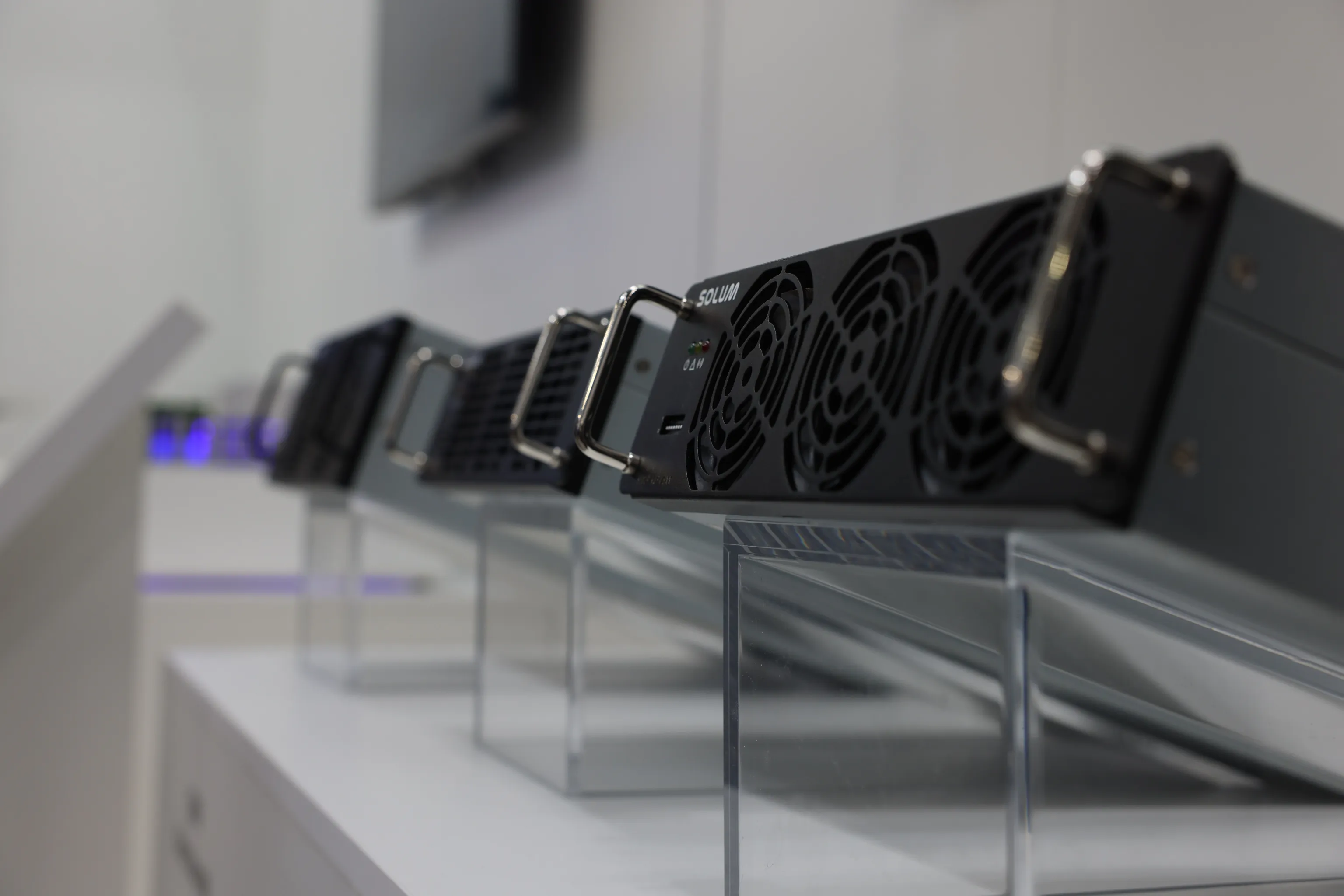Never underestimate the power of good lighting in a retail store. Retail lighting invites people in, highlights products influence purchase decisions, and even motivates employees. However, it all depends on the retail lighting design. For a retail store to be inviting, efficient, and comfortable, the retail lighting should be distinctive.
What is retail lighting design?
Retail lighting design is the aesthetic and functional display of lighting fixtures in a retail environment. It involves the strategic use of lighting techniques to enhance the shopping experience, highlight products, and create a visually appealing environment for employees and customers within retail spaces. This includes individual retail stores, boutiques, malls, showrooms, and more. It’s important to remember that retail lighting design is not simply about illuminating the space. It’s also about setting the mood and the tone, improving productivity and motivation among employees, directing attention, and influencing consumer behavior and decision-making.
Key aspects of a retail lighting design may include:
- Ambient Lighting: This type of lighting fixture provides overall illumination in a space. Ambient lighting ensures that the environment is adequately lit without causing glare or harsh shadows.
- Accent Lighting: Accent lighting is used to highlight specific products, displays, or areas of interest within a store or retail environment. It helps draw attention to key merchandise or promotional displays that retailers want to highlight or feature.
- Task Lighting: Task lighting is usually implemented in areas where specific tasks or operations are performed. This includes cashier counters, fitting rooms, packaging areas, inventory, and storage, or product demonstration areas. Task lighting ensures that these areas are well-lit for functional purposes and the productivity of the employees of a store.
- Decorative Lighting: These add aesthetic appeal to the space and enhance the store's branding or theme. Decorative lighting fixtures are known to contribute to the overall ambiance and style of the store.
- Color Temperature: The color temperature of light can also influence the mood and perception of a space. This makes it such an important aspect of retail lighting design, apart from the various types of fixtures. Warmer tones or lower color temperatures create a cozy and inviting atmosphere in retail stores. Meanwhile, cooler tones or higher color temperatures can convey a sense of brightness and modernity in the place.
- Lighting Control Systems: These allow for flexibility and customization of lighting levels throughout the day or in response to different events or promotions. Dimming controls, timers, and sensors can help optimize energy usage and create dynamic lighting effects. LED lighting, for example, can help retailers gain control of energy usage and expenses and have access to advanced systems.
Overall, effective retail lighting design considers these various aspects as well as other factors, including the store layout, the merchandise type, the target audience, and even the brand identity of the retailer.
Why is retail lighting design important?
Retail lighting design has a very significant impact on retail environments. It helps shape the shopping experience and influence the perception and behavior of people inside and outside, whether it be customers, employees, onlookers, and more.
In research by Zumtobel, Royal Institute of Technology, and the Hamburg University of Applied Sciences, it’s been found that lighting tones generally have an impact on people’s feelings and well-being in a retail environment. This only goes to show that lighting isn’t just for illumination in retail spaces. It goes beyond operational purposes and impacts other elements of the retail experience.
Here are several reasons why retail lighting design is important:
- Enhances Visibility: Proper retail design lighting ensures that products are well-illuminated and featured. This makes it easier for customers to browse and find the specific products or brands they're looking for. Good visibility can also reduce frustration and encourage longer browsing times in a retail store.
- Highlights Merchandise: Strategic use of lighting fixtures can draw attention to specific products, displays, or promotions in the store. This helps increase their visibility and desirability among customers. Accent lighting, in particular, can create focal points and highlight key merchandise, unique promotions, or seasonal items.
- Sets the Mood: Lighting has a significant impact on the atmosphere and mood of a retail space. The right lighting can create a welcoming and comfortable environment that encourages customers to linger and explore. It can also create a clean and positive environment for employees to work in. Retail design lighting, of course, can also reflect the retailer’s brand identity and convey a sense of style or sophistication.
- Affects Perceived Quality: The quality of lighting in a retail store can influence how customers perceive the quality of products. Well-lit displays can make merchandise appear more attractive, desirable, and of higher quality. Meanwhile, poor lighting can diminish the perceived value of the products, and even the service.
- Promotes Branding: Retail lighting designs can also be used to reinforce the brand identity and reputation among customers and prospects. When done right, it can create a memorable shopping experience unique to the kind of retail store and its merchandise. Consistent lighting across stores can help establish brand recognition. Unique lighting features, on the other hand, can differentiate the store and leave a lasting impression on customers.
- Drives Sales: Effective retail lighting design can lead to increased sales. This is because they can guide customers to specific areas, promote impulse purchases, and create a positive shopping experience that encourages repeat visits. In fact, according to an ENERGY STAR study, supermarkets in the United States that converted LED lighting increased their sales by 19%. Lighting can be used strategically to support sales events, promotions, and product launches.
- Optimizes Energy Efficiency: While providing adequate lighting is important, retail lighting design also encompasses energy efficiency considerations. By using energy-efficient lighting fixtures, controls, and technologies, retailers can reduce energy consumption. As a result, they can also reduce operating costs while minimizing their environmental impact as retailers.
Guidelines in designing retail lighting for stores
Designing effective retail lighting involves careful planning and consideration. To create retail space lighting that is inviting, visually appealing, and conducive to shopping, various factors should not be ignored.
Here are a few retail lighting design guidelines and tips that can help achieve effective lighting:
Understand the Store Type, Layout, and Customer Flow
First and foremost, the type of store should be considered. Some types of lighting and color temperatures cannot be used for certain types of businesses as they can dramatically change the color perception of the merchandise.
Analyzing the store layout and customer traffic patterns is also necessary. Identify key areas that require emphasis, including entrances, aisles, product displays, checkout counters, and more. It’s best to tailor the lighting design to guide customers through the store and highlight important merchandise.
Consider the Target Audience and Brand Identity
Take into account the preferences and demographics of the target audience, as well as the brand's identity and positioning. The lighting design should align with the brand image and create a cohesive experience that resonates with customers.
For example, dining retail establishments might lean toward cozy and lower temperatures for a more intimate experience. Brighter and higher temperatures, on the other hand, might be applied to grocery stores, convenience stores, or pharmacies.
Layer Lighting for Depth and Dimension
Use a combination of ambient, accent, and task lighting to create depth and dimension in the space. Layering different types of lighting helps highlight merchandise, create focal points, distribute lighting more efficiently, and establish visual interest throughout the store.
Pay Attention to Contrast or Color Rendering
Choose lighting fixtures with high contrast or a high color rendering index (CRI) to accurately render the colors and textures of merchandise. This is one of the good retail lighting design guidelines for retail spaces such as grocery stores, supermarkets, and convenience stores. Good color rendering ensures that products appear vibrant and true to life, which enhances their appeal to customers.
Balance Light Levels and Avoid Glare
It’s also crucial to achieve a balance between light levels to ensure adequate illumination without causing glare or harsh shadows in the retail space. Use diffusers, shields, and glare-control accessories to minimize glare and create a comfortable viewing environment for customers.
Create Visual Hierarchy
Prioritizing lighting for key focal points is also a must when it comes to retail lighting design guidelines. Key focal points include featured displays, new arrivals, or promotional areas that will help create a visual hierarchy to guide the customers' attention. Make sure to adjust lighting levels and intensity to emphasize these focal points and draw customers in.
Utilize Flexible Lighting Controls
Install lighting controls, such as dimmers, timers, and motion sensors, to adjust lighting levels based on the time of day, season, or specific events. It’s also recommended to switch to LED lighting systems for these advanced technologies and lighting controls. Flexible lighting controls like LED allow for dynamic lighting effects and help optimize energy usage for the retailer.
Showcase Merchandise with Accent Lighting
Use accent lighting, such as track lighting, spotlights, or display case lighting, to highlight specific products or displays. Position accent lights to illuminate merchandise evenly and minimize shadows, enhancing their visibility and desirability.
Experiment with Lighting Effects
Explore different lighting effects, such as uplighting, downlighting, grazing, or wall washing, to create dramatic visual effects and enhance architectural features. Certain smart lights can also be used as gallery lighting, highlighting specific masterpieces for sale or viewing by the public. Experimenting with these lighting effects and features adds visual interest and can reinforce the retail environment's design concept.
Regularly Maintain and Update Lighting Fixtures
Keeping lighting fixtures and systems updated is a must, of course. Clean, properly maintain, and update them to ensure optimal performance and longevity. If possible, replace any outdated fixtures with energy-efficient LED lighting to improve efficiency and reduce operating costs over time.
Why SOLUM Retail Lighting is the best lighting for stores
SOLUM Group has the answer for retailers looking for the best retail lighting solution. The SOLUM Retail Lights is a cutting-edge lighting solution for those who want sophisticated and innovative retail lighting designs. It’s equipped with advanced and customizable technology that brings illumination and aesthetics to any retail store. Whether it be home decor stores, supermarkets, fashion boutiques, or galleries, retailers can achieve the retail lighting design that they need.
Here are some of the features of SOLUM Retail Lights that make it ideal for various retail environments:
- Advanced and Energy-efficient LED Lighting Technology for sustainability and technology
- Controls and Automation for flexibility and optimized lighting settings
- Aesthetic Illumination Design for an improved viewer and buyer experience in the retail store
- Different Lighting Fixtures for various environments, events, and applications
- Customizable Beam angles, Color Temperature, and Dimming Options for various retail requirements, moods, and tones of any retail lighting design
- High CRI for a better or more accurate color representation of products
- Long Lifespan and Durability to withstand small damages in retail environments and reduce maintenance costs
- Remote Control Capabilities for easy management
- Easy Installation and Maintenance for easy implementation, reduced maintenance costs, and lesser downtime
By following retail lighting design guidelines and having the best retail lighting system, retailers can transform the shopping experience and give their stores a much-needed boost.
Get cutting-edge retail lighting for your store now! Talk to SOLUM Group experts today and find out how the SOLUM Retail Lights can complete the look of your store.
SOLUM Marketing
Category
Keywords











